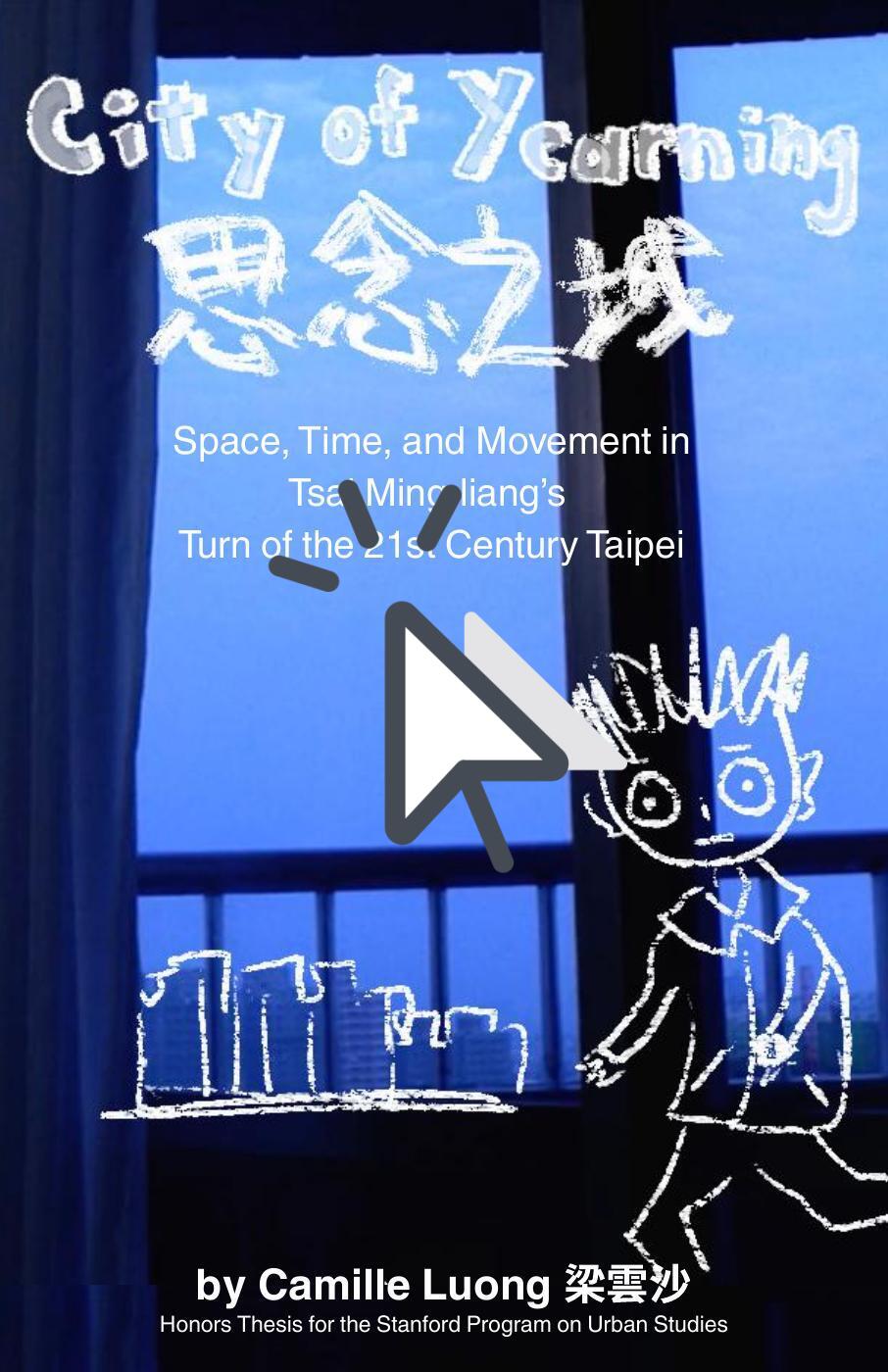City of Yearning: Space, Time, and Movement in Tsai Ming-liang’s Turn of the 21st Century Taipei — Jan 2024 - Jun 2025
Skills:
Mandarin Chinese
Illustration/Drawing
Map Storytelling
Historical Archival Analysis
Research
For my undergraduate honors thesis, I conducted an urban historical and literary analysis of three Tsai Ming-liang films set in 1990s-2000s Taipei, a period of rapid urban and political change. To make my project more accessible to a wider audience, I made a zine (short for “magazine”, used to describe handmade and self-published booklets) that presents my research using analytical text, personal memoir, film stills, maps, timelines, photographs, and original illustrations.
Advised by Ato Quayson and Ban Wang
Queue the theme song of my project, a song I chose by Changin’ My Life, an early 2000s J-pop band. Here, I pay homage to Japanese media influence and globalization in 90s/00s Taipei!
Winner of the North American Taiwan Studies Association Undergraduate Paper Competition;
Winner of the Golden Medal for Undergraduate Research at Stanford (top 10% of all honors theses), Nominee for the 2025 David M. Kennedy Prize at Stanford (top 4 individual honors theses);
Recipient of the Stanford VPUE Major Grant for Independent Research.
“Extraordinarily well researched and beautifully written.” — Stanford Undergraduate Research Medals Committee
“Very clear […], succinct and concise.” North American Taiwan Studies Association Awards Committee
Summary
In 1987, President Chiang Ching-kuo lifted martial law in Taiwan, ending a 38-year-long consecutive period of Kuomintang (KMT) Nationalist military rule. As a result, Taiwan experienced a period of massive change in the 1990s and 2000s: urbanization, democratization, and globalization occurred simultaneously and rapidly in Taipei, the national capital. Through developments in entertainment spaces, housing, and infrastructure, the experience of space and time in Taipei fundamentally transformed.
This project seeks to understand Taipei at the turn of the millennium by conducting close readings of three films directed by Tsai Ming-liang: Rebels of the Neon God (1992), Vive L’Amour (1994), and What Time Is It There? (2001). Combining urban studies and media studies analytical frameworks, I first situate the film in its urban history, examining Taipei’s economic, housing, and development policies of the time, then analyze filmic elements, including mise-en-scène, character relationships, and narrative arcs.
I argue that rapid economic, political, and infrastructural developments of 1990s and 2000s Taipei fundamentally disrupted notions of space and time for characters in these films. However, they still engaged in what I call asynchronous parallelism, engaging with urban transformations and creatively yearning for connection. Studying Taipei through asynchronous parallelism allows us to understand urbanization not only as its material developments in time and space, but also as creative and emotional engagements with time and space. It also allows us to understand Taipei beyond a location of urban alienation and disillusionment with rapid change; in my thesis, I show that Taipei at the turn of the 21st century was also a city of yearning, desire, and even hope.












